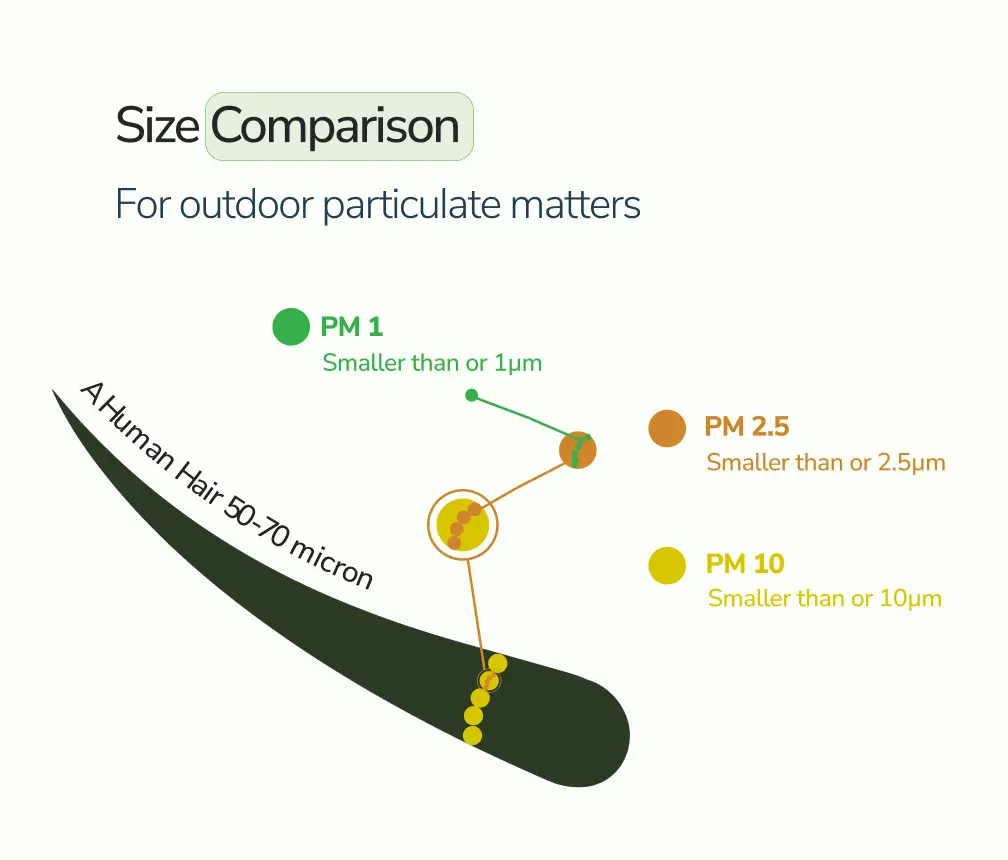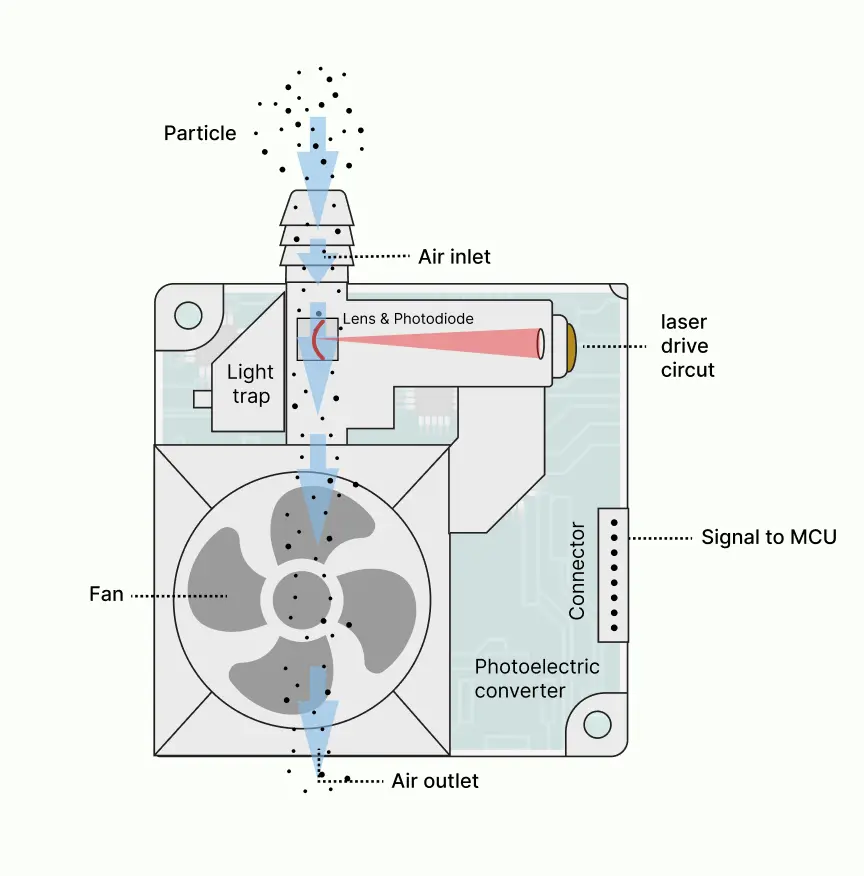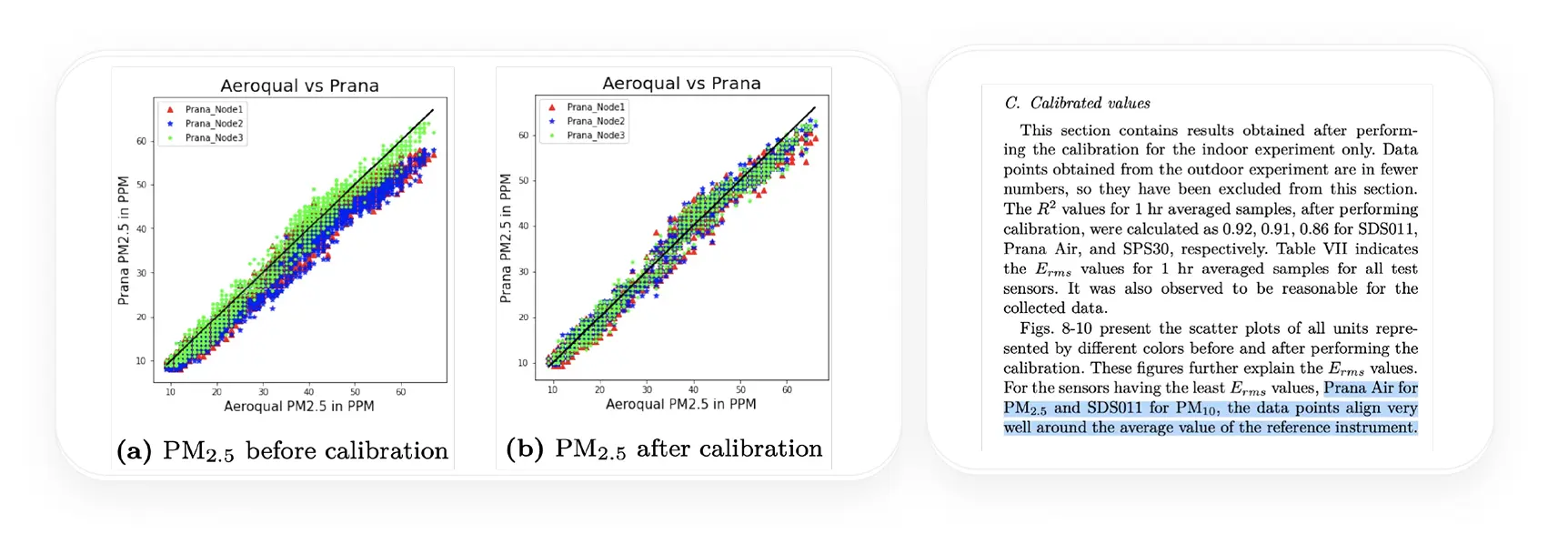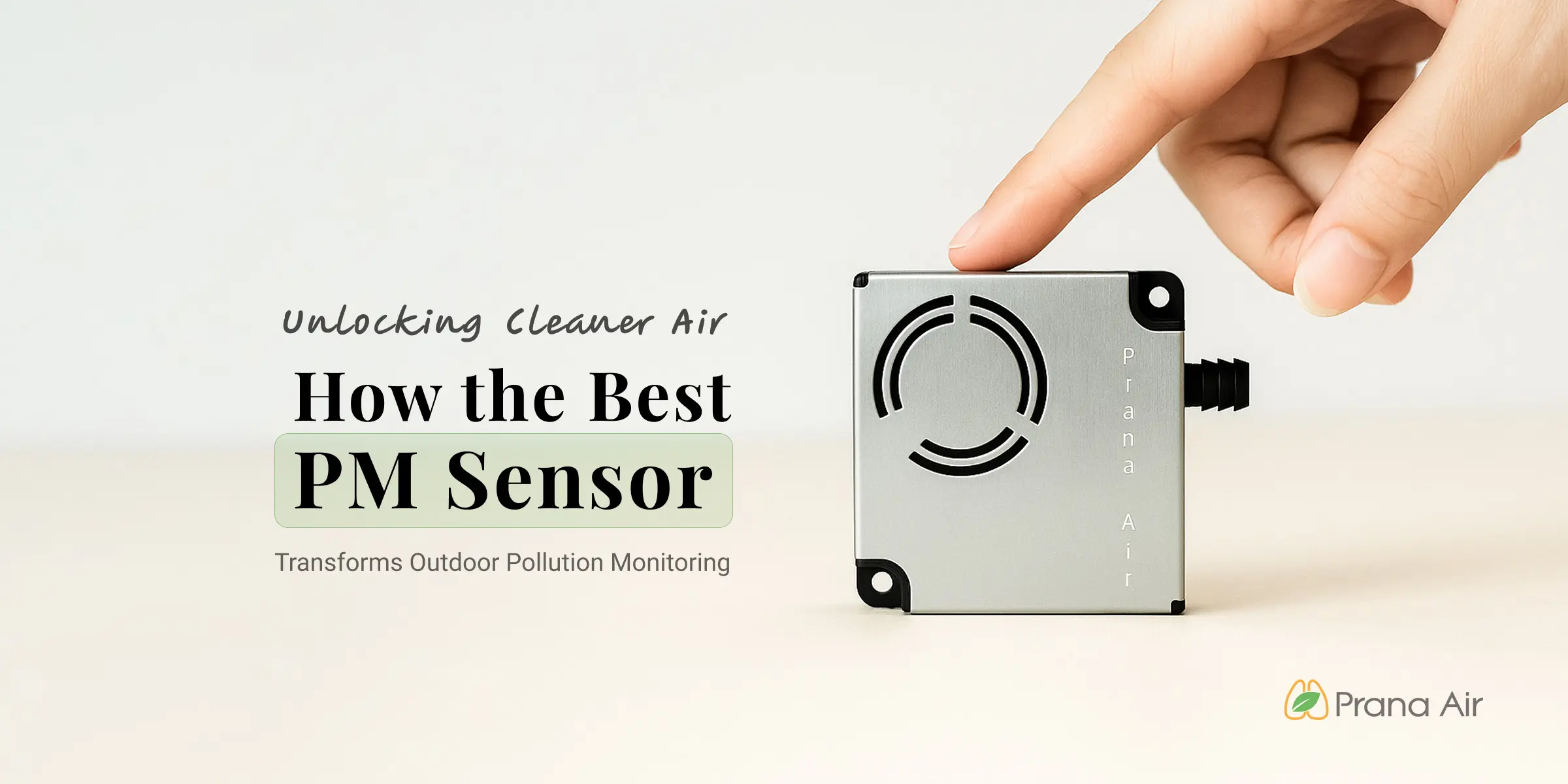We often think of air pollution as smoggy skies or factory smoke. But some of the most dangerous pollutants are the ones we can’t see. Tiny particles like PM2.5 and PM10 float silently in the air and can travel deep into our lungs, even into the bloodstream. These microscopic intruders are linked to asthma, lung disease, heart conditions, and more. That’s why real-time monitoring of particulate matter, especially outdoors, is more than just data collection. And it is possible with the best Particulate Matter (PM) sensor.
Monitoring the PM levels around you is a frontline defence for public health. Whether in busy cities, near construction zones, or around factories, outdoor PM sensors are essential tools. As for spotting pollution quickly and acting before it harms people.
PM2.5 Size Comparison: Understanding the Threat

To contextualize the danger of PM2.5, a size comparison is instructive. PM2.5 particles are 2.5 micrometers or smaller, approximately 30 times smaller than the width of a human hair (typically 50-70 micrometers). For perspective, if a human hair shows as a thick rope, PM2.5 would be akin to a fine thread, invisible to the naked eye. This small size allows PM2.5 to bypass the body’s natural filtration systems. It can penetrate deep into the lungs and potentially entering the bloodstream. The health implications are severe, including increased risks of asthma, respiratory infections, lung cancer, and heart-related issues, making accurate monitoring critical.
Why the Best Outdoor PM Sensor is Needed?
Accurate outdoor PM sensors are crucial for real-time monitoring, especially in polluted areas, to protect health and enable timely interventions, such as reducing outdoor activities during high pollution. Accurate sensors enable:
- Real-time tracking: Immediate detection of pollution spikes allows for timely interventions, such as halting outdoor work or issuing public health advisories.
- Health protection: By providing data on PM levels, sensors help individuals and communities reduce exposure, particularly for vulnerable groups like children and the old-age groups.
- Environmental management: Monitoring helps identify pollution sources and evaluate the effectiveness of mitigation strategies, supporting regulatory compliance and urban planning.
For instance, at construction sites, where PM levels can exceed safe thresholds due to dust and debris, a reliable outdoor PM sensor ensures worker safety and compliance with environmental standards, highlighting the critical role of PAS-OUT-01 in such settings.
Which is the Best Particulate Matter (PM) Sensor: Prana Air’s PAS-OUT-01
The quest for the best particulate matter (PM) sensor for outdoor use centers on accuracy, reliability, and suitability for harsh conditions. Prana Air’s PAS-OUT-01 emerges as a strong candidate, designed specifically for outdoor air quality monitoring. It boasts a measurement range of 0-31,000 µg/m³, making it capable of handling extremely high PM levels, such as those found at construction sites.
Built In-House with Precision and Purpose
Our PM sensor is a result of complete in-house research, design, and development. From concept to calibration, every aspect has engineered under one roof to ensure total quality control and seamless integration. This self-developed approach allows us to fine-tune performance, deliver reliable accuracy, and rapidly innovate based on real-world feedback—setting our sensor apart from off-the-shelf solutions.
Its key features include:
- Fan control for stable airflow, ensuring consistent readings.
- Fault detection to maintain operational reliability.
- Dust-proof design to withstand outdoor debris and harsh weather.
- Small size for easy integration into monitoring systems.
- Interference resistance to minimize external noise in measurements.
- Moisture-resistant circuit board to prevent humidity-related errors.
- Multiple communication modes for seamless data transfer to cloud systems.
- Quick detection with updates every 30 seconds, ideal for real-time monitoring.
Technology Behind Prana Air’s PM Sensor

Prana Air’s PAS-OUT-01 leverages advanced laser technology based on the light scattering method, specifically operating on 90° light scattering. This technology involves an inbuilt laser emitting light that scatters off particles in the air. A light-based receiving module detects this scattered light, and sophisticated algorithms calculate the size and concentration of particles, distinguishing between PM2.5 and PM10. This method is highly precise, as it directly measures the scattering properties of particles, enabling accurate differentiation across particle sizes. The use of laser technology ensures sensitivity to small changes in PM concentrations, making it ideal for real-time outdoor monitoring.
Accuracy of Prana Air’s PM Sensor: Evidence from Research
The accuracy of Prana Air’s PAS-OUT-01 is a cornerstone of its effectiveness, supported by rigorous scientific studies and comparative analyses. Key accuracy metrics include:
- Resolution: ±1.0 µg/m³ for PM sensors, ensuring precise measurements.
- Update Frequency: Every 30 seconds, providing high temporal resolution for real-time monitoring.
- Correlation with Reference Methods: High correlation with Beta Attenuation Monitoring (BAM) systems, a gold standard for PM measurement, as noted in comparative studies.
Two significant case studies underpin this accuracy:

- “Comparative Evaluation of New Low-Cost Particulate Matter Sensors” by Dr. Sachin Chaudhari (International Institute of Information Technology Hyderabad, India)
- This study, published in IEEE Xplore , evaluated Prana Air’s sensor alongside SDS011 and SPS30 against the Aeroqual Series-500 reference monitor.
- Tests were conducted in both indoor and outdoor environments, with PM concentrations ranging from 30 µg/m³ to 600 µg/m³, using averaging times of 1 minute, 15 minutes, 30 minutes, and 1 hour.
- Performance was assessed using metrics like coefficient of determination (R²), coefficient of variation (Cv), and root mean square error (RMSE).
- Results showed that Prana Air’s sensor performed well after calibration, demonstrating good accuracy and reliability, making it a viable alternative to traditional, costly monitoring systems.

- “Performance-based protocol for selection of economical portable sensor for air quality measurement” by Dr. Sunil Gulia (National Environmental Engineering Research Institute, New Delhi, India)
- Published in Environmental Monitoring and Assessment, this study developed a framework for evaluating economical portable sensors (EPS).
- Prana Air’s device was included in the assessment, comparing factory calibration data with reference monitors.
- The study found that PAS-OUT-01 met criteria for accuracy, sensitivity, and data management, affirming its reliability and affordability for air quality monitoring.
Key Features of PAS-OUT-01
| Feature | Prana Air PAS-OUT-01 |
| Measurement Range | 0-31,000 µg/m³ |
| Technology | Laser, 90° light scattering |
| Outdoor Suitability | High (dust-proof, moisture-resistant) |
| Resolution | ±1.0 µg/m³ |
| Update Frequency | Every 30 seconds |
| Case Studies | Yes |
Conclusion and Recommendations
In conclusion, Prana Air’s PAS-OUT-01 is the best outdoor PM sensor, offering a wide measurement range, advanced laser-based technology, and proven accuracy backed by independent studies. Its robust design and high reliability make it ideal for any outdoor environment, from urban areas to industrial sites, ensuring real-time monitoring and health protection. For those seeking a dependable solution for outdoor air quality, PAS-OUT-01 is a top choice, with its performance validated by research from IIIT Hyderabad and NEERI, New Delhi.
Tap here to know more: Prana Air’s PM Sensor







